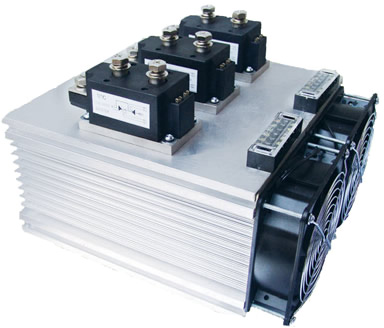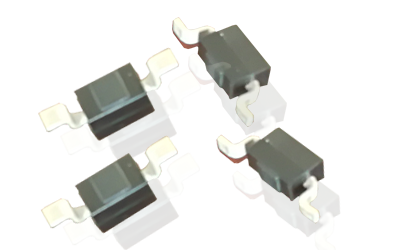Cooling conditions directly affect whether devices can reliably and safely work or not. Different devices and diverse operating conditions require different heat dissipation conditions. At the same time due to size limitation of installation box, and various cooling and ventilation conditions, the choice of heat sinks are not always same. The following paragraph describes how to choose the heat sinks.
The choice of heat sinks should be based on the actual cooling conditions for the devices including load conditions on stable and transient state, ventilation conditions for installing etc. Appropriate consideration of safety factor is necessary, and design shall be made according to the principle that the maximum working temperature of the device shall not be exceeded on steady state.
First, calculate the device's power consumption PAV based on the actual operating current IT (AV) of the device. The formula is as below:
PAV = 0.785VTM * IAV + 0.215VTO * ITAV, or
PAV = VTO * ITAV = 2.47 rT * ITAV
VTM: on-state peak voltage drop;
VTO: device threshold voltage;
rT: device on-state slope resistance.
Second, calculate maximum allowable shell temperature for the device based on PAV value.
TC = Tjm - Rjc * PAV
Tjm is the maximum allowable operating junction temperature for the device;
Rthjc is junction thermal resistance for the device.
And then calculate the allowable maximum temperature TS for heat sink surface by the following formula:
TS = TC -Rthcs * Pav
Rthcs is for contact resistance.
Finally, calculate the maximum heat resistance of the heat sink by the following equation:
Rthsa = (Ts-Ta) / PAV
Ta is the ambient temperature.
Based on above, we obtain the value of Rthsa. By referring to heat sink data sheet, we can select heat sink with the same or slightly less value.

